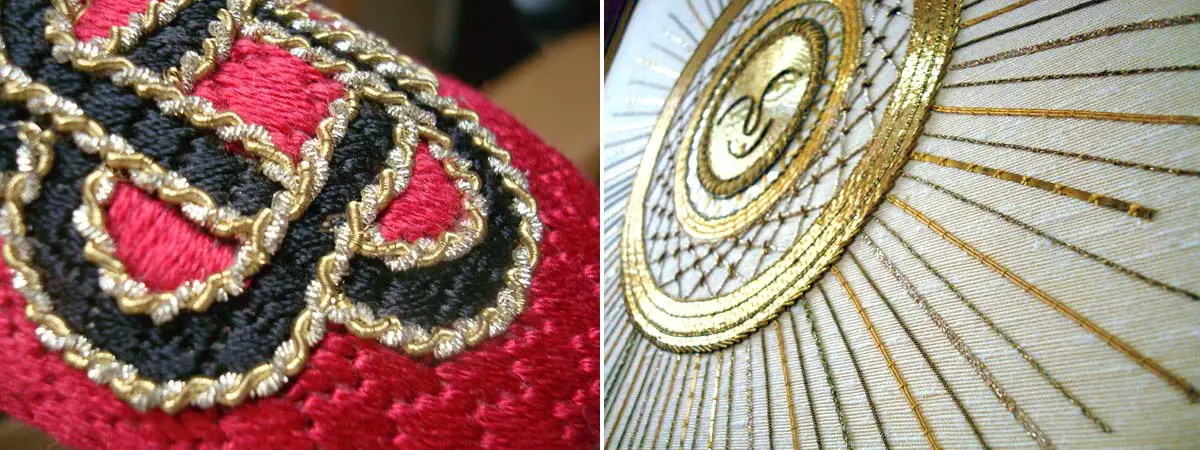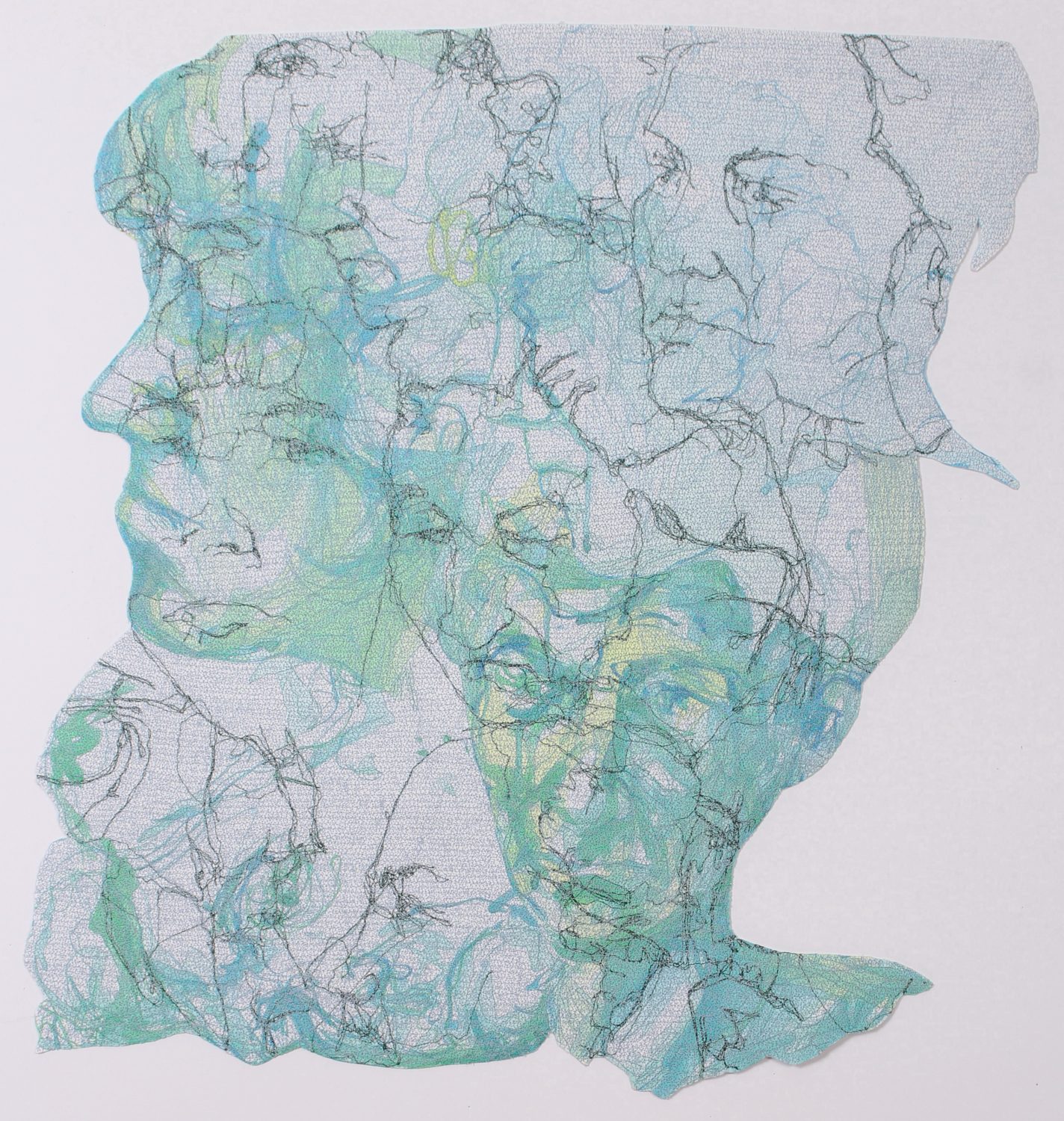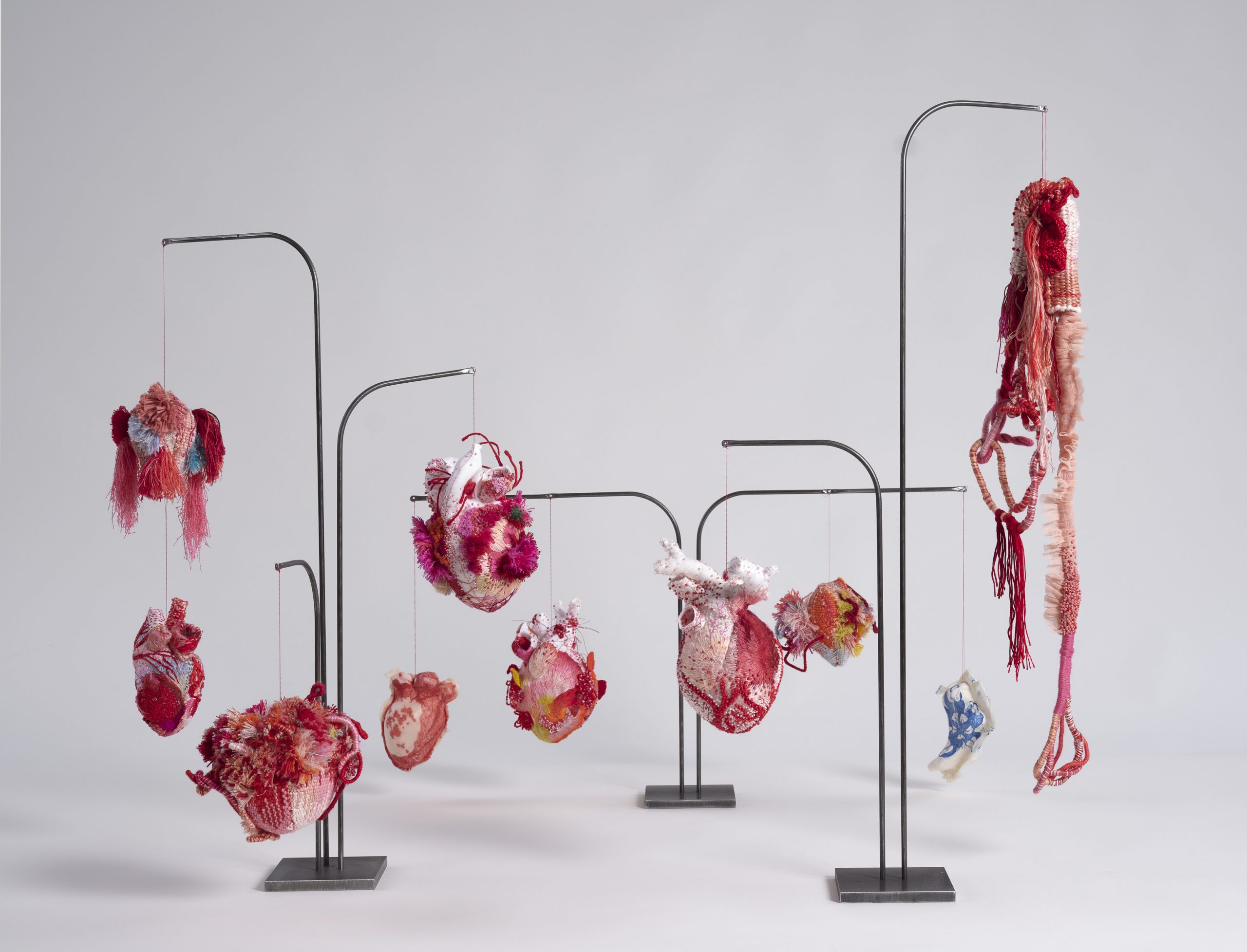Many of us are spending the next two weeks secured to our couches as we watch the Olympics. We may be simultaneously stitching, working on taxes, checking Twitter, updating Facebook, or doing any other multi-tasking project, but we are held down by the human-interest draw and sheer drama of athletic competition. (And if it’s not the Olympics, it may be Game of Thrones, Downton Abbey, or any of the fabulous shows on right now.)
So I can’t help but take this opportunity to showcase one of my favorite embroidery techniques: couching. It doesn’t involve sofas, but you may be sitting on one while you are doing it. In embroidery, couching is a technique in which threads are laid on the surface of your project and sewn in place with stitches. I love couching because it enables you to embroider with anything—thick threads, beady threads, fuzzy threads, trims, ribbons. Love a fiber but it is too unique or bulky to use in cross stitch? Couch it. Want to add layering to your collage or fiber art? Couch some colorful or highly textured thread. Your project will get an instant “facelift” as you add depth, dimension and light play.
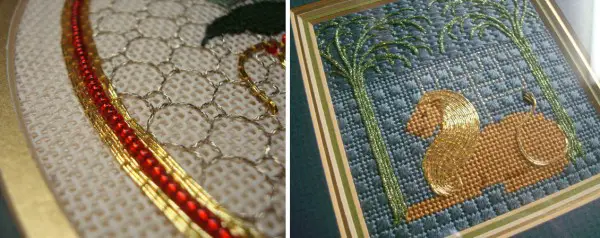
Probably a few of the gorgeous embroidery designs you’ve seen on mrxstitch.com feature couching techniques. It has been used in embroidery for centuries, especially back when real metals were the main fabric embellishment. Japanese embroidery is famous for couched motifs featuring real gold or silver pounded into a super-thin leaf and wrapped around a core (used to be horse hair, now it’s a synthetic fiber). It’s a creative, versatile, and useful stitch in any needleworker’s repertoire and can be done no matter what your skill level. You can couch by hand or by sewing machine.
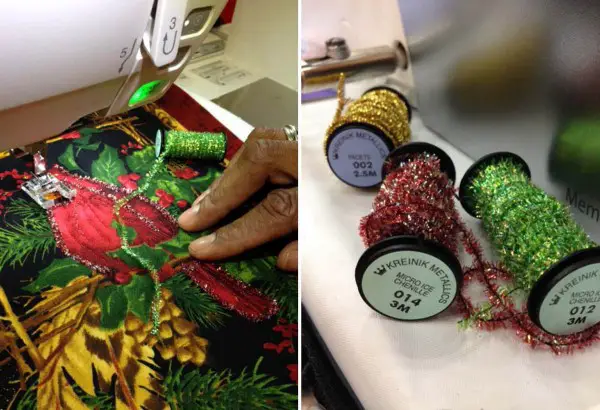
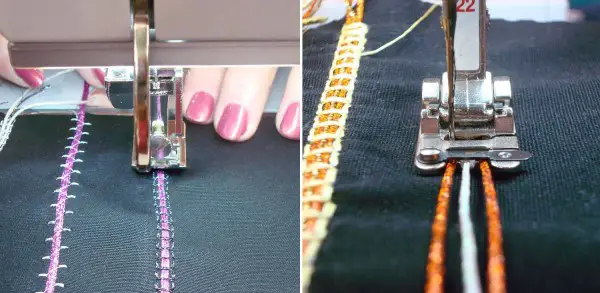
How do you couch? First, you need to plunge the end of your thick thread to the back of your work. I like to use a needle to open the fabric enough to slip the thread through, then sew it down or even tape it down temporarily on the back. An alternative to plunging is to finish the end so that it doesn’t fray and can be secured on the top of your work. Use Fraycheck™ or clear nail polish, or wrap a matching thread very tightly around the ends to keep them from raveling.

Lay your thick thread on your design and begin securing in place using one of several techniques: 1. Make a straight stitch across the thick thread, from side to side at regular intervals, 2. Make straight stitches right down the center of the thick thread (if the construction of the thread permits), 3. Make decorative stitches as desired on top of the thick thread (cross stitch, herringbone, ladder stitch etc). Use a matching color of thread to make these tacking stitches, or use a contrasting color for more color. I like to use silk threads to couch metallic or metal threads if I am doing decorative stitches. Otherwise I like to use Kreinik Cord which comes in colors to match Kreinik Medium #16 Braid, Canvas #24 Braid, Heavy #32 Braid, Facets, Micro Ice Chenille, Hot-Wire, or 1/8″ Ribbon—all of these Kreinik threads are beautiful in couching.
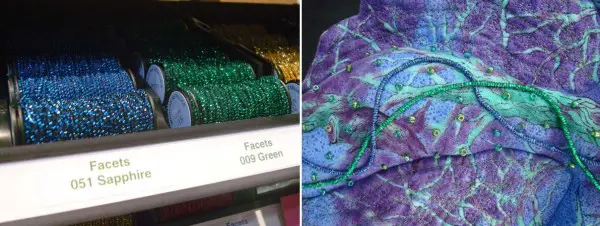
To finish, plunge or secure the ends as you did in the beginning. Your exciting journey into this versatile stitch/technique has now begun. Do some test stitching at home while you’re watching TV or sheltering from winter’s weather. Start with couching anything you may have on hand, then look at specialty threads like real metals, braids and ribbons from your favorite needlework stores.
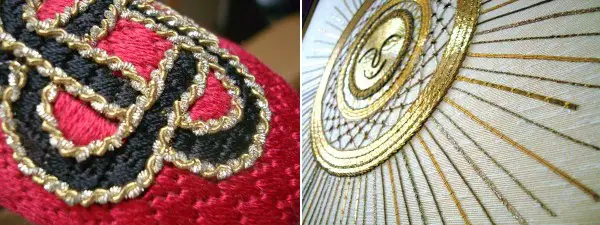
Some other options as you explore the world of couching:
- use multiple threads laid side by side for bolder effects
- couch threads to fill in a shape like a flower, pumpkin, butterfly wings, etc
- create gorgeous borders with couched threads
- try couching trims, rick-rack, and ribbons with decorative stitches
Couching gives you freedom to embroider with unique threads, to stitch curves and other shapes more easily, and to attach fun embellishments. It is a surface embroidery technique that opens up a world of stitching options for you. Have fun and play! Visit www.kreinik.com to explore all of the options in Kreinik silk, metallic and real metal threads.

